Usability UX Testing
Perform a Usability Test to Make Your Software User-Friendly
How many times have you given up on a website or a service just because it was too difficult to understand and use? It probably happened at least a few times. This is bad news for people who own websites and who offer services to their customers because they always want and need more visitors and users.
A user-friendly interface is something that every website or application needs. It doesn't matter what kind of software you are trying to sell, you need to make it as simple as possible so that everyone can use it. Therefore, you need to know some tricks that will come in handy to put you on the right track for that to happen.
Many serious businesses, companies, app developers, and website owners use certain software that helps them with user testing. This is done so that the service you provide is easily accessible by anyone on the planet. There will be no more giving up on the idea just because it is too complicated and confusing. Let's learn more about the best UX testing tools.
What Is Usability Testing?
Usability testing is a method for assessing how user-friendly a digital good or service is. It is based on watching users' actions once they access the app or the website and giving them tasks to do. Usability testing's major objective is to ascertain how simple the product is to utilize and if there are any problems that need to be fixed because they are making consumers dissatisfied, lost, or confused.
A poor user experience can quickly "kill" a customer base and drastically decrease a product's life cycle. You need usability evaluation tools to stop this from happening. Because every one of them has unique benefits and characteristics, it is challenging to choose just one. Each tool can help you with usability issues and complete tasks that are needed to improve the overall experience on your website.
Tools for usability testing are used to assess how well customers interact with a service or product. This typically entails finding out more about how a certain customer base reacts to and utilizes a product or website. Prior to the introduction of the finished product, usability studies also reveal design flaws.
A crucial element and approach in user experience research is usability testing. It assists in giving businesses direct quantitative and qualitative feedback on how actual people interact with a system or website.
How to Conduct Usability Testing?
By obtaining information on how consumers engage with a service or product, usability evaluation software is a sort of software that enables analysts or designers to do user testing. This information can be used to identify functional issues and areas that require repair, as well as to gather user feedback on the overall usability, effectiveness, and other aspects of the product or service.
So, you can test your product even before it has hit the shelves by using these tools. A piece of software that assists you in carrying out usability tests online is called a usability testing tool. It assists you in planning and carrying out the testing, following each user's interactions with the service or product effortlessly, filtering the results and users, and gaining insights through in-depth analysis of the data.
Usability testing is essential since it enables you to detect any potential problems and weak spots before launching your product on the market and gauge how real consumers see it. Software solutions called usability testing tools to make these tests simple, instructive, and effective. They offer access to testers you can choose from based on predetermined criteria, allow you to include your testers in the study, and assist you with data collection and analysis.
What Kinds of Usability Tests Are There?
Testing websites and applications on a broad scale without a user testing session is either utterly impossible or very expensive and time-consuming. Without adequate testing, users may find numerous problems, flaws, or harmful, erroneous ideas after the product is out to the target audience, harming your brand. Here are some basic forms of user testing available.
Moderated Usability Testing
UX researchers can interact directly with test participants during moderated testing, which helps them better understand consumers' issues and, ideally, find solutions for them. These interviews may also be used to gather data on user behavior and decision-making. You have the option of conducting this test in person or online.
Unmoderated Usability Testing
Unmoderated usability testing, as the name implies, refers to testing that is done without a moderator present. That implies that each task, instruction, and inquiry will be completed by the individual alone. Usually, a service with a panel of people is used to do this. These are experiments in which testers use the website or app without any supervision or assistance.
Tree Testing Session
A UX research technique called "tree testing" enables you to assess the organization and discoverability of topics on a website or mobile application. It's a crucial stage in your research strategy. Participants in a tree test are shown a text-only hierarchy of the website and asked to perform a number of challenges.
Card Sorting User Research
Information architects have long utilized card sorting, a usability tool, to better efficiently manage website design and web content. Physical note cards with content, groupings, keywords and other elements are placed in the study, and participants are asked to group the cards to observe how they might be arranged into categories.
What Are the Benefits of Using UX Testing?
Certainly, there are many benefits in using the best tools from any category that we present you with. This is the same with using UX research methods and the best tools for that. Therefore, we are here to show you some of the most obvious and less obvious merits that come with using such amazing and helpful tools.
First of all, you can get a sense of realization about what you are doing wrong. No product is perfect and there will always be room for improvement. The best usability testing tools will point out the things that you should improve and this will lead to better user satisfaction and higher conversion rates in your overall business.
It will also make your system highly efficient and improve end-user satisfaction which is everyone's goal. Also, no matter what kind of user testing session you are using, you can get feedback from real users and understand their needs better. They are all just shortcuts to a better business and your overall operation.
What Are the Best Usability Testing Tools?
The market is always growing and this is the same for every kind of tool out there. This is the same for UX testing tools that you can find on our specially made list. We have shown you some of the top tools in this category that you can use and there is no reason why you shouldn't start using them today. With some of them, you can even perform remote usability testing.
Any usability testing session will show you why it is important. Also, you can pick from other UX research methods if you feel that they will make a stronger impact on your software. Actual users will understand that you are doing your best to improve your company and try to solve any usability problems. This is a major plus for the market.
What Kind of Data Can You Gather from Usability Testing?
Usability testing allows you to gather data from every corner of your business. These tools are very thorough and they will test every aspect of your company. It doesn't matter if you have a website, an application, or some other type of service. These tools will come with a solution for all your troubles.
The best thing about them is that they will show you real-time results and feedback about your business. Most of them allow you to show those results in spreadsheets and charts so that you can have a hands-on approach to solving them. Also, if you are dealing with moderated user testing, you will hear feedback from your real users.
You can also use screen recording software to get a better idea of what instances you need to pursue. Those recordings will show you what you need to improve on and they can also be based on user interviews. There are many other methods for user testing and you can find them all in the best tools from this category.
Final Thoughts?
Testing for usability is essential when creating apps and websites. You can use it to pinpoint important problems and learn how potential clients see your product so that you can make necessary adjustments and advancements before it enters the market. Testing has a price tag, like most worthwhile company endeavors, but it's an investment that enables you to produce a superior product.
You must make a crucial decision to select the ideal usability testing instrument if you want to maximize the benefits and return on that investment. It's a good idea to carefully consider these items, find out what they can perform, and consider how much you'll have to spend to utilize them. The features and options given by these solutions can differ greatly.
#Name | Popularity | Features | Platform | Price | Free |
|---|---|---|---|---|---|
1.UserTesting | 100% people use it |  Analytics Actionable data generated from user responses.  Device Responsiveness Allows designs to adapt automatically to the device that users access the survey or software.  Feedback Collection Solicits, captures, and centralizes feedback from both structured and unstructured sources.  Real-Time Analysis Analyze collected feedback near or in real time.  Analytics Actionable data generated from user responses.  Device Responsiveness Allows designs to adapt automatically to the device that users access the survey or software.  Feedback Collection Solicits, captures, and centralizes feedback from both structured and unstructured sources.  Real-Time Analysis Analyze collected feedback near or in real time.  Recruitment Pool Vendor-provided database of respondents.  Survey ext-based surveys or quizzes related to user experience.  Test History Maintains a thorough history of test logs for reference and analysis.  Video Interview One-on-one video conferences with users.  Video Snippets Individually recorded video clips based on situations or prompts. | AndroidWebiOS | ||
2.TryMyUI | 78% people use it |  Analytics Actionable data generated from user responses.  Feedback Collection Solicits, captures, and centralizes feedback from both structured and unstructured sources.  Real-Time Analysis Analyze collected feedback near or in real time.  Recruitment Pool Vendor-provided database of respondents.  Analytics Actionable data generated from user responses.  Feedback Collection Solicits, captures, and centralizes feedback from both structured and unstructured sources.  Real-Time Analysis Analyze collected feedback near or in real time.  Recruitment Pool Vendor-provided database of respondents.  Survey ext-based surveys or quizzes related to user experience.  Video Interview One-on-one video conferences with users.  Video Snippets Individually recorded video clips based on situations or prompts. | WebAndroidiOS | $83.33 | |
3.Maze | 59% people use it |  Analytics Actionable data generated from user responses.  Device Responsiveness Allows designs to adapt automatically to the device that users access the survey or software.  Feedback Collection Solicits, captures, and centralizes feedback from both structured and unstructured sources.  Real-Time Analysis Analyze collected feedback near or in real time.  Analytics Actionable data generated from user responses.  Device Responsiveness Allows designs to adapt automatically to the device that users access the survey or software.  Feedback Collection Solicits, captures, and centralizes feedback from both structured and unstructured sources.  Real-Time Analysis Analyze collected feedback near or in real time.  Recruitment Pool Vendor-provided database of respondents.  Survey ext-based surveys or quizzes related to user experience.  Video Snippets Individually recorded video clips based on situations or prompts. | Web | $75 | |
4.Userlytics | 44% people use it |  Analytics Actionable data generated from user responses.  Recruitment Pool Vendor-provided database of respondents.  Survey ext-based surveys or quizzes related to user experience.  Video Interview One-on-one video conferences with users.  Analytics Actionable data generated from user responses.  Recruitment Pool Vendor-provided database of respondents.  Survey ext-based surveys or quizzes related to user experience.  Video Interview One-on-one video conferences with users. | WebAndroidiOS | $12 | |
5.UserInterviews | 32% people use it |  Analytics Actionable data generated from user responses.  Feedback Collection Solicits, captures, and centralizes feedback from both structured and unstructured sources.  Recruitment Pool Vendor-provided database of respondents.  Survey ext-based surveys or quizzes related to user experience.  Analytics Actionable data generated from user responses.  Feedback Collection Solicits, captures, and centralizes feedback from both structured and unstructured sources.  Recruitment Pool Vendor-provided database of respondents.  Survey ext-based surveys or quizzes related to user experience.  Video Interview One-on-one video conferences with users.  Video Snippets Individually recorded video clips based on situations or prompts. | Web | $45 | |
6.UserFeel | 23% people use it |  Analytics Actionable data generated from user responses.  Device Responsiveness Allows designs to adapt automatically to the device that users access the survey or software.  Feedback Collection Solicits, captures, and centralizes feedback from both structured and unstructured sources.  Real-Time Analysis Analyze collected feedback near or in real time.  Analytics Actionable data generated from user responses.  Device Responsiveness Allows designs to adapt automatically to the device that users access the survey or software.  Feedback Collection Solicits, captures, and centralizes feedback from both structured and unstructured sources.  Real-Time Analysis Analyze collected feedback near or in real time.  Recruitment Pool Vendor-provided database of respondents.  Survey ext-based surveys or quizzes related to user experience.  Test History Maintains a thorough history of test logs for reference and analysis.  Video Interview One-on-one video conferences with users.  Video Snippets Individually recorded video clips based on situations or prompts. | WebAndroidiOS | $30 | |
7.UserZoom | 17% people use it |  Analytics Actionable data generated from user responses.  Device Responsiveness Allows designs to adapt automatically to the device that users access the survey or software.  Feedback Collection Solicits, captures, and centralizes feedback from both structured and unstructured sources.  Real-Time Analysis Analyze collected feedback near or in real time.  Analytics Actionable data generated from user responses.  Device Responsiveness Allows designs to adapt automatically to the device that users access the survey or software.  Feedback Collection Solicits, captures, and centralizes feedback from both structured and unstructured sources.  Real-Time Analysis Analyze collected feedback near or in real time.  Recruitment Pool Vendor-provided database of respondents.  Survey ext-based surveys or quizzes related to user experience.  Test History Maintains a thorough history of test logs for reference and analysis.  Video Interview One-on-one video conferences with users.  Video Snippets Individually recorded video clips based on situations or prompts. | AndroidWebiOS | $45 | |
8.Lyssna | 14% people use it |  Analytics Actionable data generated from user responses.  Device Responsiveness Allows designs to adapt automatically to the device that users access the survey or software.  Feedback Collection Solicits, captures, and centralizes feedback from both structured and unstructured sources.  Recruitment Pool Vendor-provided database of respondents.  Analytics Actionable data generated from user responses.  Device Responsiveness Allows designs to adapt automatically to the device that users access the survey or software.  Feedback Collection Solicits, captures, and centralizes feedback from both structured and unstructured sources.  Recruitment Pool Vendor-provided database of respondents.  Survey ext-based surveys or quizzes related to user experience.  Video Snippets Individually recorded video clips based on situations or prompts. | Web | $89 | |
9.Loop11 | 12% people use it |  Analytics Actionable data generated from user responses.  Device Responsiveness Allows designs to adapt automatically to the device that users access the survey or software.  Feedback Collection Solicits, captures, and centralizes feedback from both structured and unstructured sources.  Real-Time Analysis Analyze collected feedback near or in real time.  Analytics Actionable data generated from user responses.  Device Responsiveness Allows designs to adapt automatically to the device that users access the survey or software.  Feedback Collection Solicits, captures, and centralizes feedback from both structured and unstructured sources.  Real-Time Analysis Analyze collected feedback near or in real time.  Recruitment Pool Vendor-provided database of respondents.  Survey ext-based surveys or quizzes related to user experience.  Video Interview One-on-one video conferences with users.  Video Snippets Individually recorded video clips based on situations or prompts. | WebAndroidiOS | $179 | |
10.PlaybookUX | 11% people use it |  Analytics Actionable data generated from user responses.  Feedback Collection Solicits, captures, and centralizes feedback from both structured and unstructured sources.  Recruitment Pool Vendor-provided database of respondents.  Survey ext-based surveys or quizzes related to user experience.  Analytics Actionable data generated from user responses.  Feedback Collection Solicits, captures, and centralizes feedback from both structured and unstructured sources.  Recruitment Pool Vendor-provided database of respondents.  Survey ext-based surveys or quizzes related to user experience.  Video Interview One-on-one video conferences with users.  Video Snippets Individually recorded video clips based on situations or prompts. | MacOSiOSWindowsWebAndroid | $49 | |
11.UserBrain | 11% people use it |  Analytics Actionable data generated from user responses.  Device Responsiveness Allows designs to adapt automatically to the device that users access the survey or software.  Feedback Collection Solicits, captures, and centralizes feedback from both structured and unstructured sources.  Recruitment Pool Vendor-provided database of respondents.  Analytics Actionable data generated from user responses.  Device Responsiveness Allows designs to adapt automatically to the device that users access the survey or software.  Feedback Collection Solicits, captures, and centralizes feedback from both structured and unstructured sources.  Recruitment Pool Vendor-provided database of respondents.  Survey ext-based surveys or quizzes related to user experience.  Video Interview One-on-one video conferences with users.  Video Snippets Individually recorded video clips based on situations or prompts. | WebiOS | $39 | |
12.UXtweak | 11% people use it |  Analytics Actionable data generated from user responses.  Device Responsiveness Allows designs to adapt automatically to the device that users access the survey or software.  Feedback Collection Solicits, captures, and centralizes feedback from both structured and unstructured sources.  Recruitment Pool Vendor-provided database of respondents.  Analytics Actionable data generated from user responses.  Device Responsiveness Allows designs to adapt automatically to the device that users access the survey or software.  Feedback Collection Solicits, captures, and centralizes feedback from both structured and unstructured sources.  Recruitment Pool Vendor-provided database of respondents.  Survey ext-based surveys or quizzes related to user experience.  Video Interview One-on-one video conferences with users.  Video Snippets Individually recorded video clips based on situations or prompts. | WebiOS | $80 | |
13.Lookback | 10% people use it |  Recruitment Pool Vendor-provided database of respondents.  Video Interview One-on-one video conferences with users.  Video Snippets Individually recorded video clips based on situations or prompts.  Recruitment Pool Vendor-provided database of respondents.  Video Interview One-on-one video conferences with users.  Video Snippets Individually recorded video clips based on situations or prompts. | $25 | ||
14.Utest | 5% people use it |  Feedback Collection Solicits, captures, and centralizes feedback from both structured and unstructured sources.  Survey ext-based surveys or quizzes related to user experience.  Feedback Collection Solicits, captures, and centralizes feedback from both structured and unstructured sources.  Survey ext-based surveys or quizzes related to user experience. | |||
15.Dscout | 5% people use it |  Feedback Collection Solicits, captures, and centralizes feedback from both structured and unstructured sources.  Real-Time Analysis Analyze collected feedback near or in real time.  Recruitment Pool Vendor-provided database of respondents.  Survey ext-based surveys or quizzes related to user experience.  Feedback Collection Solicits, captures, and centralizes feedback from both structured and unstructured sources.  Real-Time Analysis Analyze collected feedback near or in real time.  Recruitment Pool Vendor-provided database of respondents.  Survey ext-based surveys or quizzes related to user experience.  Video Snippets Individually recorded video clips based on situations or prompts. |
Frequently Asked Questions
Find answers to the most asked questions below.
Why Should I Conduct Usability Testing?
Usability testing is critical for understanding how users interact with your product or service. It allows you to identify and fix design issues, improve the user experience, and ensure your product meets the needs of your target users. Usability testing can help ensure that your product is easy to use, intuitive, and enjoyable for users.
When Is Usability Testing Implemented in the Design Process?
Usability testing should be conducted early in the design process, before launching a product or service. This will allow you to identify and fix usability issues before they become costly and time-consuming problems. Usability testing can also be conducted throughout the design process, to ensure that usability improvements are being made.
How Many Participants for Usability Testing?
The number of participants for usability testing depends on the scope and complexity of the product or service. Generally, it’s best to have a minimum of five participants in order to get a good representation of the user base. However, the number of participants can vary depending on the nature of the product or service.
Which Testing Technique Is Used for Usability Testing?
Usability testing can be conducted using a variety of techniques, such as interviews, surveys, and focus groups. The most common technique used for usability testing is usability testing with a prototype. This involves having users interact with a prototype of the product or service, so that the design team can observe their behavior and identify usability issues.
What Is the Difference Between Usability Testing and Performance Testing?
Usability testing focuses on the user experience, while performance testing focuses on the system performance. Usability testing is conducted to ensure that the product or service is intuitive and easy to use, while performance testing is conducted to ensure that the system is able to handle the intended workload. Usability testing is typically conducted with a prototype, while performance testing is conducted with a fully developed system.

.svg)



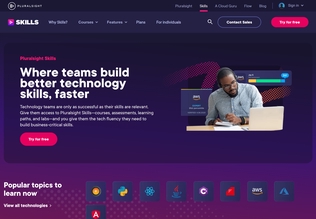

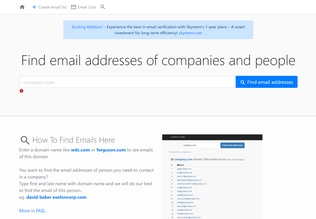
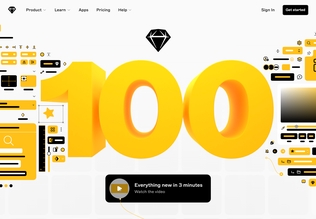
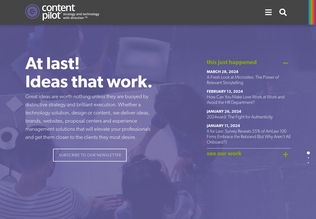

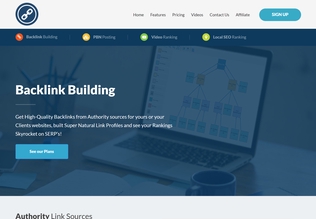























.svg)








.svg)






























